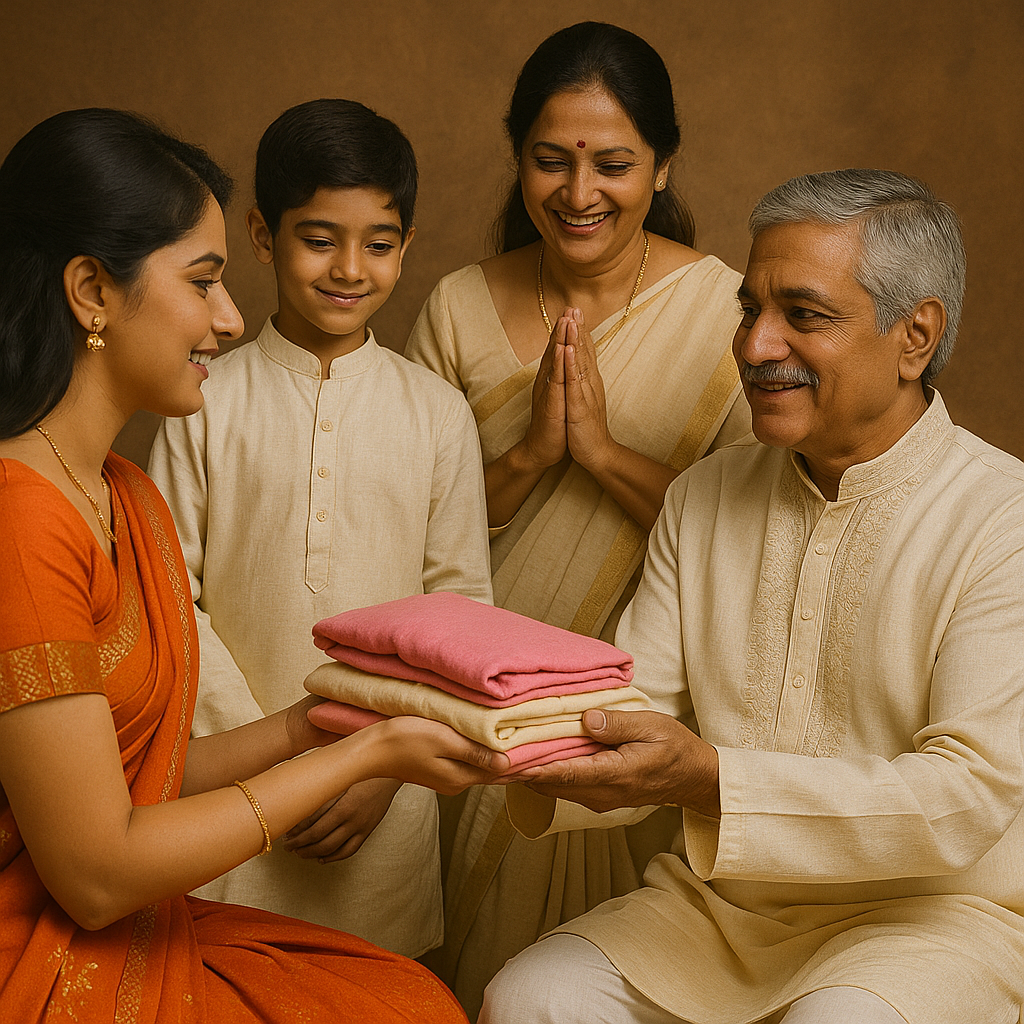RESPECT FOR ELDERS

Respect for elders is a keystone of Hindu culture. This genuine acknowledgement of seniors is demonstrated through endearing customs, such as sitting to the left of elders, bringing gifts on special occasions, not sitting while they are standing, not speaking excessively, not yawning or stretching, not putting one's opinions forward strongly, not contradicting or arguing, seeking their advice and blessings, giving them the first choice in all matters, even serving their food first.
NAME PROTOCOL
The younger ones never use the proper name of their elders. In the Tamil tradition, a younger brother, for example, refers to his brother as annan, or periannan (older brother), not by name. The elder, however, may use the name of the younger. Children are trained to refer to all adults as auntie or uncle. Adults, too, refer to each other as elder or younger brother or simply as brother (likewise for women). Only men of the same age will occasionally address each other by their first name. A Hindu wife never speaks the name of her husband. When referring to him she uses terms such as 'my husband', 'him' or, for example, 'Jyothi's father'. When addressing yogis, swamis or sadhakas, one uses the title, not personal pronouns, such as you or your (nor by the name alone). For example, one would never ask, 'What do you want?' Instead, one would inquire, 'What does Swami want?
TOUCHING FEET IN RESPECT
One touches the feet of holy men and women to recognise their great humility and inner attainment. A dancer or a musician touches the feet of his or her teacher before and after each lesson. Children prostrate and touch the feet of their mother and father at special times, such as New Year's Day, birthdays and before departing on a journey.
BEHOLDING THE DIVINE
Newcomers to Hinduism will quickly become familiar with the concept of darshana, meaning, 'seeing' and referring to beholding with inner or outer vision, a temple image, Deity, holy person or place, with the desire to inwardly contact and receive the grace and blessings of the venerated being or beings. This is the spirit of Hindu worship. Even beholding a photograph in the proper spirit is a form of darshana. Not only does the devotee seek to see the Divine, but to be seen as well, to stand humbly in the awakened gaze of the holy one, even if for an instant, such as in a crowded temple when thousands of worshippers file quickly past the enshrined Lord. Gods and gurus are thus said to 'give' darshana, and devotees 'take' darshana, with the eyes being the mystic locus through which energy is exchanged. It is a direct and personal two-sided apprehension -- the highly sought-after experience of the Hindu faith.
DAKSHINA
It is tradition to provide dakshina, a monetary fee or gift to a priest is given after any rite. Dakshina is also given to gurus as a token of appreciation for their spiritual blessings.


-in-Astrology.jpg)






.jpg)




Comments 0
Leave your thought here